King of Medicinal Mushrooms
Chaga is an extraordinary functional mushroom that grows primarily on birch trees and has been used since the 12th century for its medicinal compounds. It is well known for its antimicrobial, antiviral, and antitumor activity.1,2 I’m really excited to share what I’ve discovered about this “King of Medicinal Mushrooms” with the intention that you will learn how to enjoy the benefits of this amazing adaptogen for yourself!
Use these links to jump to different sections of the article:
- What is Chaga Mushroom?
- Health Benefits of Chaga Extract
- Where to Find Chaga Mushrooms
- How To Use Chaga
- Chaga Recipes
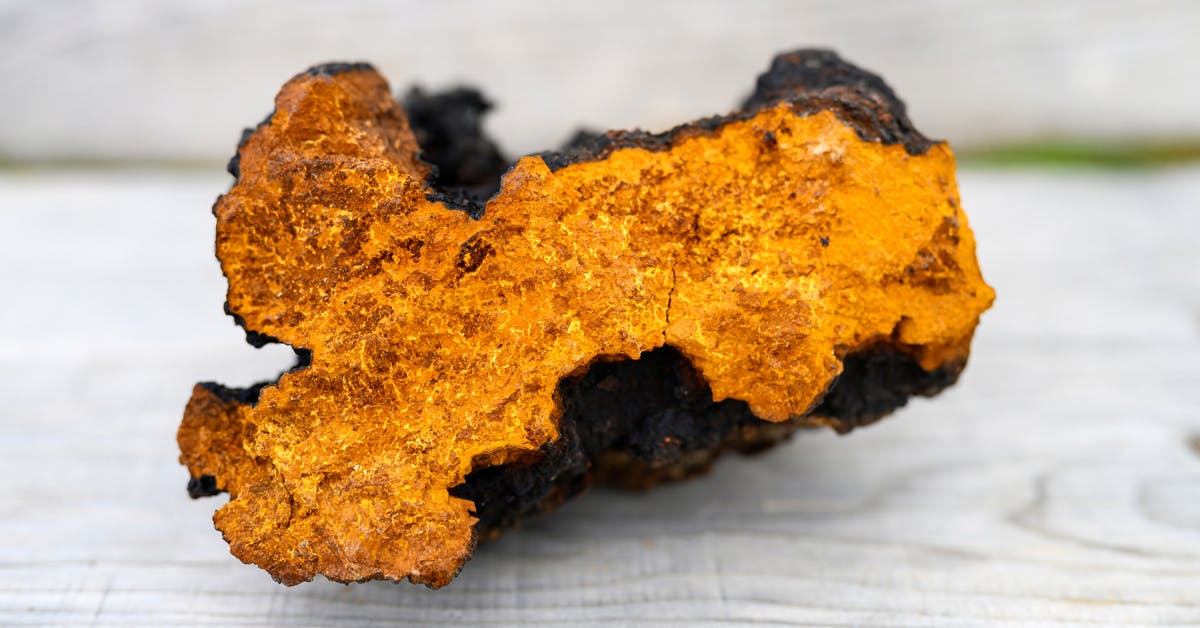
What Is Chaga Mushroom?
Chaga (Inonotus obliquus), is a fungus, and the Chaga “mushroom” is not technically a mushroom but a sclerotium (a mass of Chaga mycelium and wood from the tree that it grows on). Mushrooms are the fruiting bodies of fungi. Chaga does have a fruiting body, but for most of its life it grows underneath the bark of the host tree and is rarely seen.
A pathogen to the birch tree, the spores of the Chaga fungus typically infect the tree through its weak spots like wounds and dead branches.Once the fungus takes hold, it causes the center of the tree trunks and branches to start to rot. The fungus spreads inside and grows toward the outside of the tree until it eventually bursts through the bark and a burnt charcoal-looking mass (a “conk”) appears. The conk will continue to grow on the tree’s trunk as the inside of the tree continues to decay. This can go on for ten, twenty, or even eighty or more years. As the conk grows, the medicinal compounds of the birch tree become concentrated in the Chaga mass.3,4
Because the tree can live for a long time after being infected with the fungus, some people believe that the relationship between Chaga and the birch is symbiotic in nature. While this is a nice theory, I have not found any scientific evidence to support this idea.

Health Benefits of Chaga Mushroom Extract
Chaga has been used for centuries to help improve the body’s response to stress, boost immunity, reduce inflammation, promote healthy skin and hair, fight and prevent cancer, and as a remedy for many other ailments.
Anti-inflammatory
In its true adaptogenic style, Chaga has a way of balancing inflammation, allowing the “good” inflammatory responses to occur while preventing the “bad” inflammation from developing.5,6
Anti-cancer
Chaga has long been used in folk medicine for cancer treatment in Russia, China, Korea and Japan. Studies show that Chaga contains large amounts of betulin or betulinic acid, a compound that has anti-cancer properties. In other scientific studies, Chaga extract demonstrated antimitotic activity on human cancer cells, as well as reduction of tumor growth, which could be useful in stopping the spread of cancer.7,8,9
Boosts Immunity
Chaga is rich in polysaccharides, especially beta-glucans, which are responsible for stimulating the immune system by activating adaptive immune cell responses.10,11
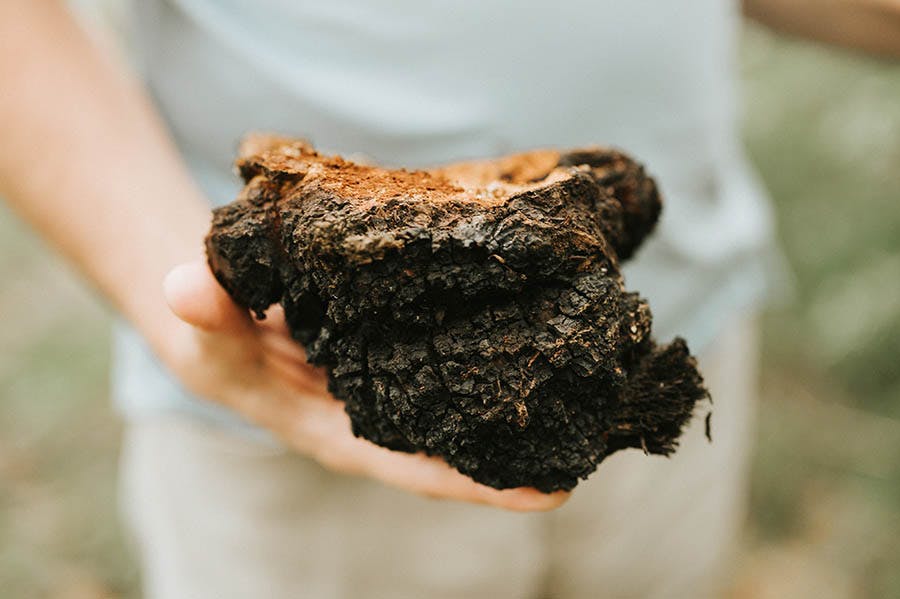
Anti-viral
Chaga mushrooms have a powerful enzymatic system and a strong system of defense, due to their parasitic mode of life. Insight into the connection between Chaga mushroom and its antiviral effect has proven to be promising. Some studies show that Chaga extract fights against viruses, including herpes, hepatitis C, and HIV. In other studies, Chaga extract prevented infection by blocking viruses from attaching to cells.12,13
Antioxidant
Antioxidants are molecules that work to neutralize damaging free radicals (unstable atoms that can damage cells) in our bodies. These free radicals can contribute to heart disease, cancer and other illnesses, and keeping high levels of antioxidants in our bodies helps to keep us healthy and balanced. Surprisingly, Chaga is loaded with more antioxidants than berries! Many people use Chaga for anti-aging and to help promote healthy skin and hair.14
“The study also found that Chaga has 3 times more antioxidant power than the next strongest food of any kind (wolf berry). So according to the study, Chaga is the #1 best antioxidant source in existence. Additionally, Chaga provides 19 of the 20 amino acids required by humans, making it a valuable supplement for vegetarians and vegans.” — University Health News
While some scientific studies indicate that Chaga extract may provide these health benefits, there is definitely a need for clinical trials to help determine dosage and potential side effects. Most people do well at the recommended supplemental doses, however, as with any type of new food or supplement, start with a small amount to make sure that you are not allergic. You should also talk with your doctor before adding any new supplements to your diet, especially if you are on medication.
Where To Find Chaga Mushrooms
Chaga grows mainly on birch trees in the northern climatic zones, including the Northern United States, Canada, Russia, and Northern China.
Last month I had the awesome opportunity to go Chaga hunting in the forests of Vermont with an amazing bunch of people. It was definitely an adventure, and let’s just say I have some new campfire story material!
I learned that the best way to locate Chaga is to find a stand of birch trees. Then, look high and low for a black clump that looks like burnt charcoal. It will have a cork-like, golden-colored inside. Full grown Chaga usually averages around 15 to 20 inches in size. The first Chaga mushroom we found on our trip was too small. Check out the short video below where Josh, (our forage leader and founder at Life Itself), explains what we should be looking for.
To sustainably harvest, I use a small hatchet to chop a portion of the conk from the tree, being careful to leave some so that the Chaga will continue to grow. Once I have harvested the Chaga, I break it up into smaller pieces and let them dry out for about a month.
If foraging for Chaga does not sound feasible or up your alley, don’t worry! You can source wild-harvested Chaga in many forms from many reputable sources.
Some of my favorite sources for Chaga are:

How To Use Chaga
Chaga Mushroom Powder
You can purchase Chaga in powder form or if you have whole chunks, you can grind it down to a powder with a coffee grinder.
Chaga powder is great for adding to coffee, tea, breakfast bowls, oatmeal, nut milk, smoothies, or your favorite plant-based recipes. I like adding it to my vegan mac and cheese recipe, it really deepens the umami flavor!
Creating a hot water extraction by adding the powder to a hot beverage is the best way to “unlock” the beneficial compounds of Chaga, and it is the most common way it is consumed.
Whole Chunk Form
If you have whole, chunked Chaga that you either foraged or purchased, the best way to use it is to make a tea (or grind it and use it in powder form). You can also buy it in tea bags ready to go!
Chaga is also available in tincture and capsule form if you are interested in just getting the benefits without the work of using it in powder or whole form. Just be sure to get it from a reputable source that uses wild harvested Chaga and not Chaga mycelium cultivated on grain. Chaga cultivated on grain does not have the same level of health-boosting compounds that wild Chaga contains.

Chaga Mushroom Recipes
Chaga Tea Recipe
- Add Chaga chunks to a pot filled with filtered water.
- Slowly bring to a simmer and continue to simmer for at least 15 minutes, until the water becomes a dark brown color. If you are brewing a large batch, this could take several hours. Low and slow!
- Strain the chunks from the tea.
- Optional: Sweeten with honey or maple syrup and/or add plant-based milk, get creative! (I like adding chai spices and a little oat milk to mine)
This tea can be kept for up to 7 days in the refrigerator. Use cold as iced tea, in smoothies, reheat for hot tea or make hot chocolate!
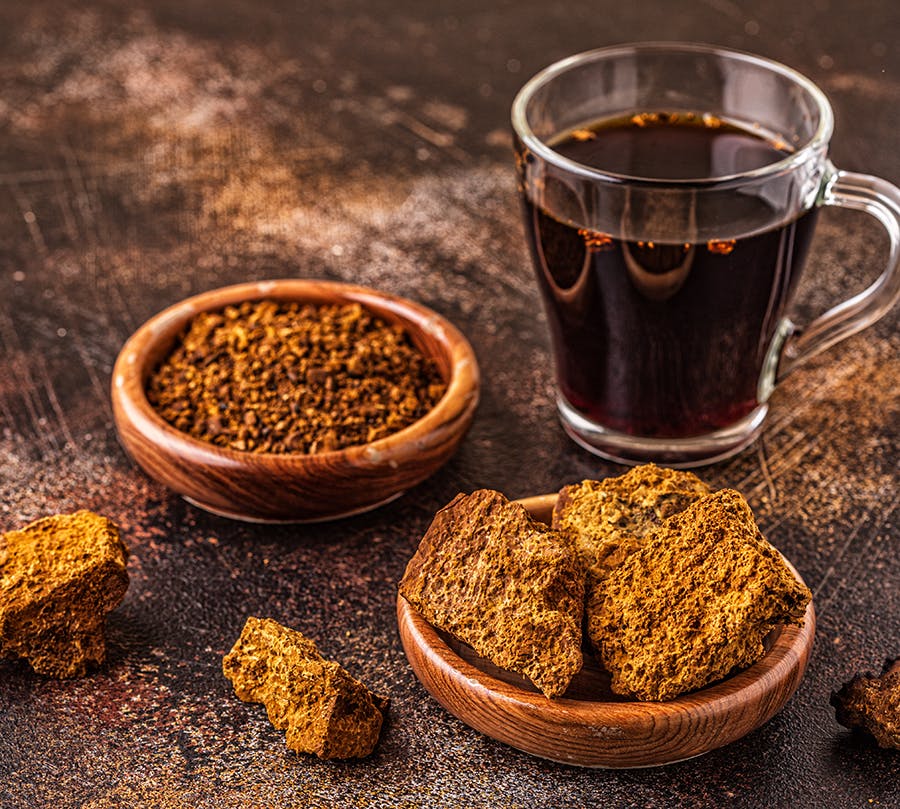
Chaga Mushroom Hot Chocolate Recipe
- Add Chaga tea to a blender with your favorite plant-based milk (coconut, oat, soy, nut milk), cacao powder and maple syrup (or honey) and a dash of vanilla.
- Blend until warm.
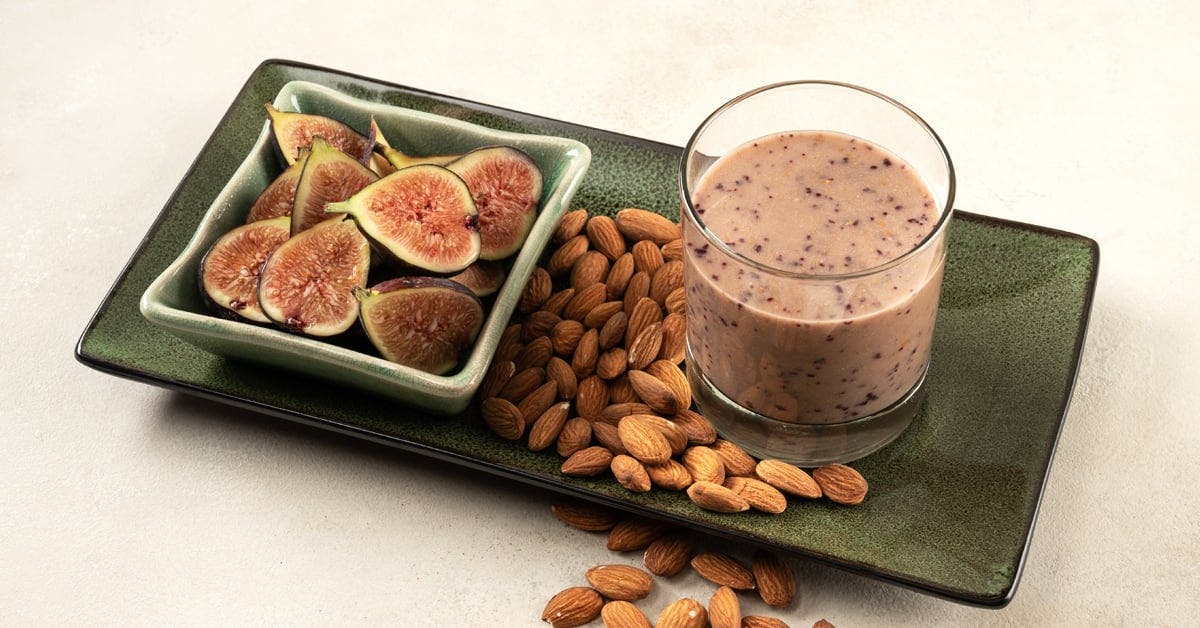
Fig Almond Milk with Chaga Mushroom Powder
Ingredients:
- Raw Almonds
- Water
- Fresh Fig
- Chaga Mushroom Powder
- Honey
- Chinese Five Spice
- Orange Zest
Check out the full recipe on our recipe archive here: Fig Milk with Chaga Mushroom Powder
I hope you enjoyed getting to know the “King” and I’d love to hear your experience with Chaga, drop a comment below!

Other Articles in This Series
The World of Adaptogens Blog Series
- Introduction to Adaptogens
- Ashwagandha: Benefits, Uses & Recipes
- Holy Basil: Benefits, Uses & Recipes
- Reishi Mushroom: Benefits, Uses & Recipes
References:
- Mushrooms, tumors, and immunity, https://pubmed.ncbi.nlm.nih.gov/10460691/
- Recent Developments in Inonotus obliquus (Chaga mushroom) Polysaccharides, https://www.ncbi.nlm.nih.gov/pmc/articles/PMC8124789/
- Insects and Diseases of Alaskan Forests, https://www.fs.usda.gov/Internet/FSE_DOCUMENTS/stelprdb5315942.pdf
- Chaga (Inonotus obliquus), a Future Potential Medicinal Fungus in Oncology?, https://www.ncbi.nlm.nih.gov/pmc/articles/PMC6142110/
- Inonotus obliquus attenuates histamine-induced microvascular inflammation, https://www.ncbi.nlm.nih.gov/pmc/articles/PMC6706056/
- The Good, The Bad and the Ugly of Inflammation, https://medschool.vanderbilt.edu/vanderbilt-medicine/the-good-the-bad-and-the-ugly-of-inflammation/
- An unusual lanostane-type triterpenoid, spiroinonotsuoxodiol, and other triterpenoids from Inonotus obliquus, https://pubmed.ncbi.nlm.nih.gov/20691456/
- Immunomodulatory Activity of the Water Extract from Medicinal Mushroom Inonotus obliquus, https://www.ncbi.nlm.nih.gov/pmc/articles/PMC3774877/#B2
- Medicinal mushrooms as an attractive new source of natural compounds for future cancer therapy, https://www.ncbi.nlm.nih.gov/pmc/articles/PMC6044372/
- A Critical Review on Health Promoting Benefits of Edible Mushrooms through Gut Microbiota, https://www.ncbi.nlm.nih.gov/pmc/articles/PMC5618583/
- Effects of beta-glucans on the immune system, https://pubmed.ncbi.nlm.nih.gov/17895634/
- The Antiviral, Anti-Inflammatory Effects of Natural Medicinal Herbs and Mushrooms and SARS-CoV-2 Infection, https://www.ncbi.nlm.nih.gov/pmc/articles/PMC7551890/
- Aqueous extract from a Chaga medicinal mushroom, Inonotus obliquus (higher Basidiomycetes), prevents herpes simplex virus entry through inhibition of viral-induced membrane fusion, https://pubmed.ncbi.nlm.nih.gov/23510282/
- Chaga Benefits That Are Not Found in Any Other Herb, https://universityhealthnews.com/daily/nutrition/chaga-benefits-that-are-not-found-in-any-other-herb/
The information shared in this post is a combination of my personal experience, research, and knowledge as a certified holistic health coach, and is intended for educational purposes only. These statements have not been evaluated by the FDA and are not intended to diagnose, treat, cure, or prevent any disease or to be considered a substitute for professional medical advice.
Comments
Great article! I always buy all of my chaga from Foraged. Way easier than going into the woods myself lol. Check it out - https://foraged.market/shop-by-species/chaga/
Thanks for sharing this resource Thomas!
Want to buy machine for commercial use
That’s great Alan, one of our team members will email you shortly!
Robin, this is awesome!!! We were looking for new mushroom sources too, so thank you!
My pleasure Kaitlin, glad you found it helpful 😄


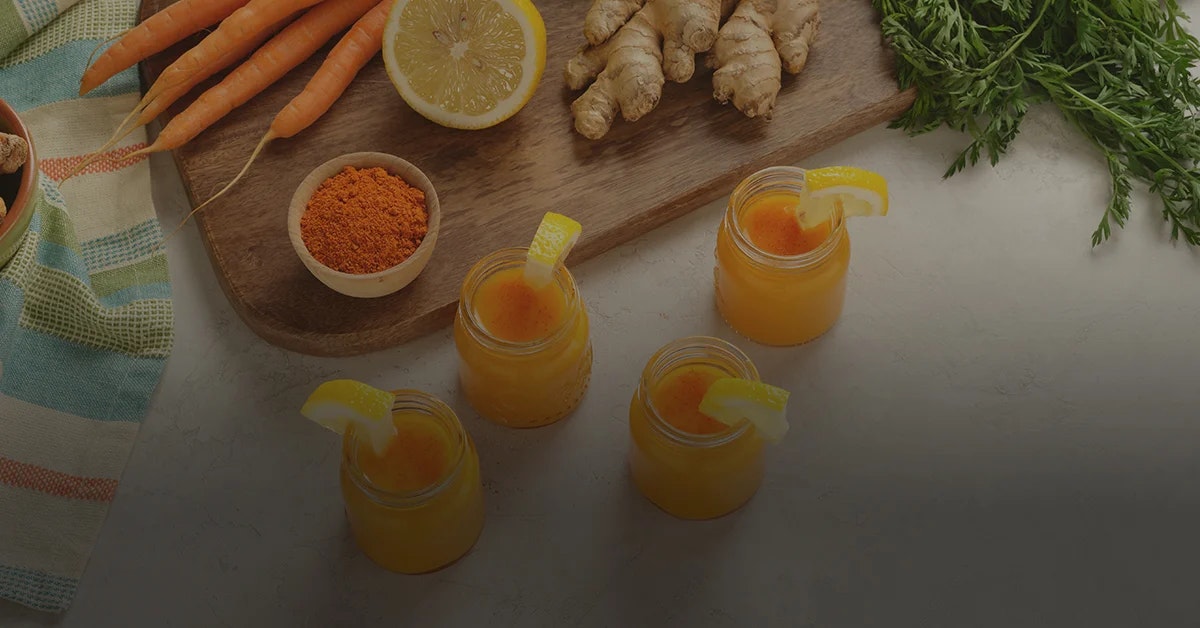
Comment